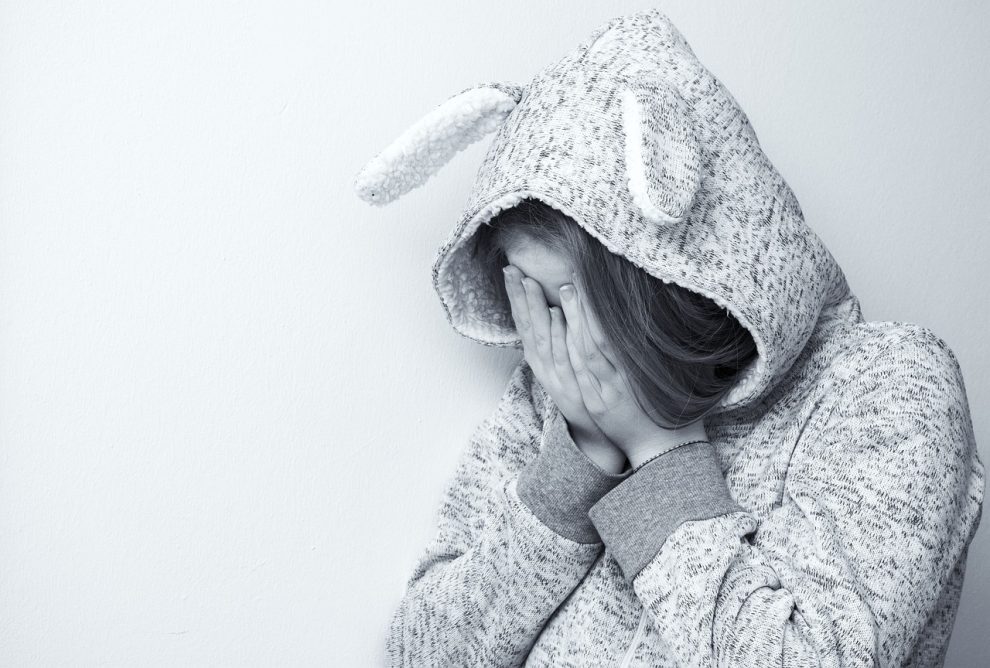The Feb. 3 suicide of 14-year-old Adriana Kuch two days after she was assaulted by students in the hallway of her New Jersey high school is an example of bullying in more than one form. Not only was Kuch physically abused, but her assailants also recorded the incident, posted it on social media and then sent her the videos and screenshots to continue the harassment.
The National Center for Education Statistics and Bureau of Justice reports that about one out of five students ages 12 to18 have experienced bullying. Of the students who have been bullied, 41% think they will be bullied again.
There are fewer available statistics for bullying in elementary schools, and some suggest an even larger percentage. In a 2021 literature review published by The International Journal of Educational Research, bullying in younger children tends to start as physical violence and turns into nonverbal and cyberbullying as they progress in age.
Bullying and cyberbullying defined
The National Bullying Prevention Center defines bullying. “When someone aggressively uses their ‘power’ to target another individual with repeated, unwanted words or actions. Those targeted are hurt either physically or emotionally and have a hard time stopping what is happening to them.”
Bullying is about a power imbalance — a person who bullies is usually physically stronger, more popular and/or has more money than the person who is being bullied, according to the National Center for Education Statistics.
The American Psychological Association defines cyberbullying as “verbally threatening or harassing behavior conducted through such electronic technology as cell phones, email, social media or text messaging.” The Centers for Disease Control and Prevention has revealed that about 16% of reported bullying takes place online or by text.
Aggressive behavior can come in many forms. The NCES reports that students ages 12 to 18 have reported being the subject of rumors; made fun of, called names or insulted; excluded from activities on purpose; pushed, shoved, tripped or spit on; threatened with harm; made to do things they did not want to do; and having their property destroyed on purpose.
Boys experience more physical bullying; girls are more often subjected to rumors and purposely excluded from activities.
There is a higher presence of bullying in middle schools than high schools and rural schools more than urban. There is more bullying of females, children of multiple ethnicities, lower socioeconomic status, children with disabilities and those who identify as LGBTQ. Religious beliefs are also a factor.
Effects of bullying
According to StopBullying.gov, bullying affects those who are bullied, those who bully and those who observe bullying.
Those who are bullied tend to experience depression, anxiety, changes in sleep and eating habits, decreased academic performance and health complaints. They are more likely to have low school attendance and higher dropout rates.
Those who bully tend to drop out of school and experience issues into adulthood, such as alcohol and drug abuse and criminal behavior; they also are more inclined to abuse romantic partners, spouses or their children, and engage in early sexual activity.
Children who witness bullying can experience mental health problems like depression and anxiety, increased use of drugs, alcohol and tobacco and skipping school.
Bullying and suicide
Although suicide is often associated with bullying, Stopbullying.gov reports that the risk of suicide from bullying alone is not frequent. There can be other issues that contribute to suicide, such as trauma history, depression and problems at home. “Additionally, specific groups have an increased risk of suicide, including American Indian and Alaskan Native, Asian American, lesbian, gay, bisexual and transgender youth. This risk can be increased further when these kids are not supported by parents, peers and schools. Bullying can make an unsupportive situation worse.”
Colorado anti-bullying laws
Colorado state law dictates school districts must adopt a safe school plan and a conduct and discipline policy that specifically addresses bullying prevention and education. The safe school plan must include input from parents, teachers, administrators, students, school accountability committees and student councils. Districts are required to designate a team at each school building to advise administration about bullying incidents. The team could include law enforcement officials, social workers, health professionals, mental health professionals, school psychologists, counselors, teachers, administrators, parents and students.
The law encourages the implementation of evidence-based bullying prevention programs.
School District 49 and bullying
Jason White, D 49 coordinator of community care and licensed school counselor, said the district sees different forms of bullying and has seen increased bullying on social media, email and text. “Cyberbullying allows a student more access to bullying another student. They don’t need to wait for the right time and place. It’s at their fingertips at any given time.”
Although Stopbullying.gov reports a significant number of bullying incidents take place in both hallways or stairwells (43%) and classrooms (42%), the NCES stated that security measures such as guards, assigned police officers, staff supervision in hallways and having a student code of conduct makes little difference. Security cameras are a slight deterrence, but only by 4.5%.
Stopbullying.gov advises that schools provide a safe and supportive environment to help combat bullying. “Establish a culture of inclusion and respect that welcomes all students. Reward students when they show thoughtfulness and respect for peers, adults and the school. Set a tone of respect in the classroom. This means managing student behavior in the classroom. Well-managed classrooms are the least likely to have bullying.” Further, the agency suggests staff training in how to identify bullying.
D 49’s handles bullying with a three-pronged approach: prevention, intervention and postvention.
Preventative measures factor in both systems and relationships. The district monitors internet access on school campus through the online safety dashboards Bark and Securly. These programs report when students engage in risky online content via interpersonal communication or websites accessed.
To assess student behavior for signs of bullying or other issues, White said it starts with building relationships with students. “Building relationships with our kids involves everyone — teachers, counselors, administrators, safety and security team members — everyone, and takes place in every aspect of the learning experience, including outside of class in clubs, sports and other activities,” White said. “We assess by looking at everything from potential flat affect, anger, sadness, depression, anxiety or suicidal ideation. The more common signs of bullying are anger, withdrawal and isolation. There can be some overt signs like comments or actions of retaliation, a ‘get even’ type of mentality, as well as potential thoughts of self-harm.”
There is no specific profile for a student who is being bullied. “We try to understand the student and recognize when changes are occurring and when those signs start to paint a bigger picture,” he said.
Bullying can be reported in multiple ways. Students are encouraged to report being a victim of bullying and/or witnessing bullying to any trusted adult. The Safe2Tell program is an anonymous reporting option for any concerns, including bullying.
The district follows Board of Education policy on handling bullying, beginning with an investigation. White said in many cases, creating a safe environment, ensuring the kids are separated, takes place before collecting facts. Parents are contacted and then an investigation takes place. “We try to uncover what is going on and determine what those next steps will be.”
White said the district uses a restorative circle process, following guidelines established by the International Institute of Restorative Practices. There are potential solutions that can involve mending a relationship, if that is an appropriate option, or disciplinary actions determined by following a restorative discipline matrix. Discipline can include suspensions or expulsions.
The district uses a team approach to address bullying incidents to include safety, security, administrators, counselors and teachers. It partners with law enforcement when needed, including the student resource officers and the county sheriff.
An incident of bullying is not one and done. “We don’t say you made a report, the person is disciplined and this will go away. There can be further problems,” White said. There is an intentional focus on creating a safe environment and restoring relationships for the long term.
Educating the educators
The needs of each school is identified annually with a culture and climate survey completed by staff, parents and third grade through 12th grade students. White said the feedback from the survey provides the quantitative data of the number of disciplinary incidents and how many are related to bullying. If a school finds they have higher incidences than other schools, they may need more character-building or a social-emotional learning curriculum.
There is no district-wide mandated SEL program other than restorative practices. Each zone and school determines their needs. Capturing Kids Hearts has been used to help build trusting relationships in some buildings. Rachel’s Challenge and other character-building programs have been used. “We look at if the programs will supplement the relationships built and safety processes that will work with our systems,” White said. “First and foremost, the district is focused on creating a sense of community so that students feel they are a contributing member of the community. Selecting a program needs to build upon that effort.”
Resources for students
White advises students who are the subjects of bullying or witness bullying to report it to a parent or guardian or a trusted adult at school. If unable to do so, he suggests using the Safe2Tell program to make an anonymous report (see sidebar for resources).





